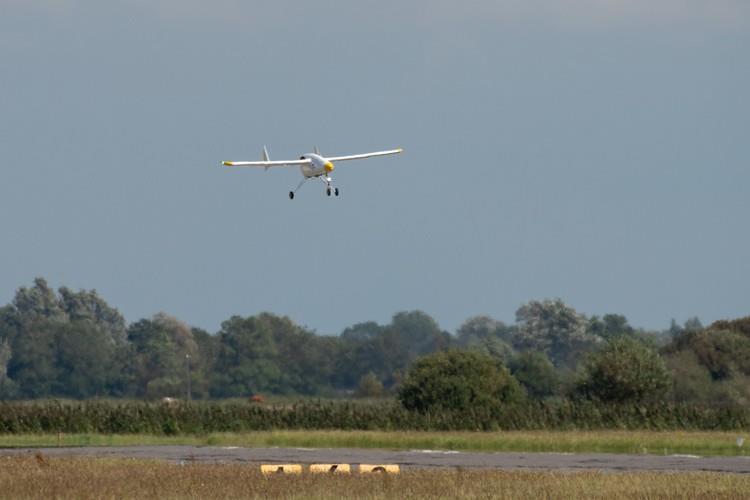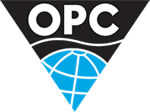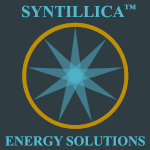- The ‘SeaMe’ project uses innovative, low-carbon technologies to gather data in order to help protect the marine environment and to provide comprehensive ecosystem observation; the project is scheduled to run for a total of three years
- For the first time in Europe, a long-range drone has been deployed for environmental monitoring of an offshore wind farm
- Additionally, the deployment of an autonomous underwater vehicle was tested successfully; AI-based video cameras are in use both above and below water; initial results from eDNA sample collection are available

RWE’s Kaskasi offshore wind farm has set a milestone: for the first time in Europe, a drone equipped with a high-resolution camera system was used for offshore environmental monitoring. This technique is a low CO2-emission, and less intrusive alternative to traditional methods of observing birds and marine mammals, which are based on airplanes and ships.

The drone is just one of many state-of-the-art monitoring technologies being deployed as part of RWE’s SeaMe (Sustainable ecosystem approach in Monitoring the marine environment) project. The goal of the project is to develop a holistic understanding of the interactions between offshore wind farms and the ecosystem. Alongside the drone, an AI-powered fish detection system with video cameras is being operated on an autonomous underwater vehicle. Furthermore, high-resolution video cameras have been installed on turbines to monitor birds and their behavior. Water samples are being analysed for traces of environmental DNA. The project began in autumn 2024, initially with onshore testing and preparation of the various technologies for offshore deployment. It has now entered its next phase, starting simultaneous data collection at RWE’s Kaskasi wind farm off the German coast.
Thomas Michel, COO RWE Offshore Wind: 'As a global leading player in offshore wind, we feel responsible for building and operating our wind farms in harmony with nature. We are committed to continuous improvement. With the SeaMe project, we are embracing new technologies that enable us to simultaneously monitor a range of different factors. That way, we can gain an even deeper understanding of the interactions between offshore wind and the marine ecosystem.'
Deployment of more eco-friendly technologies for monitoring marine ecosystems
SeaMe is investigating how new techniques can make environmental monitoring less invasive and more sustainable.
The long-range drone (Primoco UAV One 150), operated by BioConsult SH, can stay airborne for up to 15 hours. It is fitted with an optimised HiDef video system for autonomous operation, ensuring consistency with historical data as the camera provides the same coverage and resolution as conventional aerial surveys. During its initial test, the drone flew approximately 500 meters above the Kaskasi offshore wind farm, neighboring wind farms, and a reference area at sea. The recorded footage will be analysed in the coming weeks using artificial intelligence and human quality control. This method offers a less intrusive and low-emission way to monitor birds and marine mammals, such as porpoises, removing the need for human observers at sea or the use of airplanes. According to BioConsult SH, using the drone can reduce the carbon footprint of monitoring by up to 90 percent.
At two wind turbines in the Kaskasi offshore wind farm, a total of six high-resolution video cameras were installed to track birds and their behavior around the clock. Spoor’s AI-based analysis allows for automatic evaluation, accurate detection, tracking, and identification of birds. Technologies for night-time monitoring, such as infrared illumination and a thermal imaging camera, are also being tested. The details that can be captured by this method complement and advance traditional bird monitoring approaches such as radar, offering also higher temporal coverage than approaches such as aerial photography. Thanks to high-resolution images and expert validation by seasoned ornithologists, birds can be accurately identified even from great distances, providing valuable insights into site- and species-specific behavior.
Continuous monitoring is also carried out underwater. Long-term underwater camera systems have been installed to operate day and night. In contrast to conventional methods that are typically invasive and conducted only once a year, the system developed in collaboration with Danish start-up Anemo Robotics enables fully autonomous, non-invasive monitoring of marine fauna. Cameras capture 30-second clips every 15 minutes over several months, generating a comprehensive data set that is AI-analysed, making both short-term behaviours and long-term ecological trends visible.
The functionality and logistics for deploying and retrieving an autonomous underwater vehicle have been successfully tested for the first time. The vehicle was launched and recovered by a service vessel that is usually used for wind farm maintenance. Developed by the Robotics Innovation Center at the German Research Center for Artificial Intelligence (DFKI), the underwater vehicle is equipped with cameras, sonars, and oceanographic sensors to identify fish, marine mammals, and benthic animals, while simultaneously recording oceanographic parameters.
Ecosystem-based approach for biodiversity monitoring
The project takes a holistic view of the marine ecosystem by simultaneously recording both physical and biological parameters, including aspects often overlooked in traditional monitoring programs. This includes phytoplankton (microscopic algae) and zooplankton (such as small animals), which play crucial roles in the food chain. Additionally, physical parameters such as temperature, salinity, and oxygen levels are measured to explain changes in species distribution and abundance. These parameters are collected using the autonomous underwater vehicle.
Water samples are analysed for environmental DNA (eDNA) to determine which species are present in the wind farm area. Unlike conventional methods that involve collecting and removing animals from the sea, the SeaMe team focuses on the genetic traces left behind, such as faeces, skin cells, mucus, or other cellular residues shed into seawater. Comparing the found DNA sequences with a database of known species enables scientists at the Helmholtz Institute for Functional Marine Biodiversity (HIFMB) and the Alfred Wegener Institute (AWI) to identify the originating species without collecting the animals. Initial analyses of samples taken near Heligoland have identified 143 different species – from phytoplankton and zooplankton, to worms, crabs, fish, and marine mammals, including the harbour porpoise native to the German North Sea.
To successfully realise the ecosystem approach, all field data is consolidated, employing new assessment methods, efficient data management, and intuitive visualisations. The Danish company DHI is working with all research partners to develop a user-friendly data portal, which will soon be accessible via the SeaMe website.
Leading marine scientists to contribute their expertise
The three-year project is carried out in collaboration with prominent partners including the Helmholtz Institute for Functional Marine Biodiversity at the University of Oldenburg (HIFMB), the Alfred Wegener Institute Helmholtz Centre for Polar and Marine Research (AWI), BioConsult SH, the Danish company DHI A/S, the Norwegian company Spoor, the German Research Centre for Artificial Intelligence (DFKI) and the Danish start-up Anemo Robotics.
Combining wind farm operation and environmental monitoring
All tests take place at RWE’s Kaskasi offshore wind farm, which is located 35 kilometres off the coast of the German island of Heligoland. With a total installed capacity of 342 megawatts, the wind farm is capable of supplying the equivalent of approximately 400,000 German homes with green electricity. From Heligoland a dedicated RWE team efficiently monitors, operates and maintains the wind farm, and also provides support for the SeaMe project.
Further information can be found on the SeaMe website.
Source: RWE











